#Germano Zullo
Text
My Life as a Zucchini (2016)

My Life as a Zucchini was nominated for an Oscar in 2016's “Best Animated Film” category but ever since Shark Tale, that Award's reputation has been dodgy. Does this picture stand toe-to-toe with Zootopia and Moana, or was it a scramble to find 5 nominees?
Orphaned after his perpetually drunk mother falls down the stairs, Icare “Zucchini” (voiced by Erick Abbate in the English Dub, by Gaspard Schlatter in the Original French) is sent to an orphanage. There, he experiences the same joys and sorrows all children do while waiting for a family to adopt him.
What you’ll notice about this French/Swiss production from the first frame are its visuals. Even in a year that featured wonderful CGI Imagery, traditional animation courtesy of Wild Bunch/Studio Ghibli, and another great picture by Laika, My Life as a Zucchini stands out. The colors, character designs, and overall style are so perfectly suited to the story anyone suggesting anything else would seem like pure idiocy. With their exaggerated proportions and color-coded features, the characters evoke children’s drawings - the ones you used to do when you couldn’t count so everyone got about a dozen fingers on each hand - polished and brought to life. Instantly, you're transported to a time of innocence and simple joys, but there’s more to this film than basic emotions.
The silly-sounding title may lead you to believe that this is a picture for little kids, but you'd be wrong. Inside the adorable children living at the orphanage are feelings that would be difficult to handle even for adults. I wouldn’t recommend it for those under the age of 10, but for everyone else, wow. It’s both hilarious and heartbreaking that Zucchini has an empty beer can and a drawing of a superhero as mementos representing his dead mother and long-absent father. Without ever being sappy, forced, or cloying, the film turns towards you and opens its arms. All you can do is open yours in return and give it a big, warm hug. You’ll laugh at the children’s silly games, the way they ask each other about life’s big questions, and their wild logic-defying antics… until you start to think about them. At that point, you might be brought to tears.
It’s ultimately pointless to try and avoid falling in love with the characters of My Life as a Zucchini. I don’t know if I would’ve selected it as my pick for the best animated film of 2016, but it certainly would've been a contender. This is an excellent film, so bold in its visuals and so rich in heart. I had to jump through all sorts of hoops to see it and they were all worth it. When you check it out, stick around for the end credits. There’s a scene at the very end that gives us some insight into the process that brought this story to life. (Original French version on the big screen, October 7, 2017)

#My Life as a Zucchini#movies#films#movie reviews#film reviews#ma vie de courgette#claude barras#celine sciamma#germano zullo#morgan navarro#gaspard schlatter#sixtine murat#paulin jaccound#michel vuillermoz#2016 movies#2016 films#animated movies#animated films
12 notes
·
View notes
Text
En voiture, s'il vous plaît
Les albums "Quel train incroyable!" et "Aller bon train" sont parus récemment. Mais on le sait : un train peut en cacher un autre!

Léo et sa maman attendent sagement sur le quai l’arrivée de leur train. Ils ont un peu d’avance. Une annonce les avertit du passage d’un convoi qui ne s’arrête pas. Et effectivement, un beau train orange traverse la gare à toute allure. A son bord, on aperçoit une quantité d’oiseaux de toutes espèces et de toutes tailles. Le petit garçon en reste bouche bée.

La maman n’a rien remarqué, elle cherchait quelque chose dans son sac. Voilà qu’un autre train arrive qui, cette fois, est rempli d’animaux terrestres. Le quai s’est rempli entre temps, mais Léo est toujours le seul à avoir remarqué l’étrangeté de la situation. Enfin, leur train arrive. Les passagers montent à bord, le voyage commence. Quelle n’est pas la surprise du garçon quand, en passant sur un pont, il découvre qu’en contrebas, tous les animaux sont réunis et prennent un bain.

Léo n’a pas rêvé! il a juste la capacité de voir ce que d’autres ne voient plus. Mais d’ailleurs, le jeune lecteur lui aussi a été témoin du passage de ces étranges trains. Il a pu observer les animaux, voir voler deux plumes après le passage du premier train et déchiffrer les destinations inscrites sur les wagons. Et de s’immerger dans la double page qui se déplie à la taille du train et surtout du vaste plan d’eau où s’ébattent les animaux.

Comment ne pas penser à l’incroyable Règlobus dans lequel prennent place toutes sortes d’animaux ? Ils sont conduits par une rainette au caractère bien trempé qui a concocté un règlement strict sur la façon de se conduire à bord, lequel règlement n’est de loin pas toujours suivi par ses passagers. Pour ce premier album, Pierre Alexis, a reçu en 2022 la Pépite du livre illustré du SLPJ en Seine-Saint-Denis.

Une petite fille et sa mère partent en vacances en train. Le voyage sera long puisque, partant le matin, elles n’arriveront que le lendemain. Mais quelle excitation à cette idée ! Le récit commence la veille du départ avec les derniers préparatifs. En plus de son doudou, de son carnet et de ses crayons, la petite a choisi d’emporter un abécédaire à l’intention des voyageurs. Et puis nous, car nous faisons partie de ce périple tout au long duquel nous voyagerons en immersion à travers le regard émerveillé de la gamine. Nous l’observerons, elle et sa maman, mais aussi les passagers, leurs activités, l’intérieur du train, les paysages qui défilent, les arrêts dans les gares. L’album est documenté, copieux. Que ce soit aux niveau des illustrations ou du texte, il prend son temps, à hauteur de ce long trajet.

En filigrane sous les images, un autre récit prend place en résonance, constitué des aphorismes contenus dans l’abécédaire. Sous forme d’un rail sans fin qui traverse le livre, il amène de la poésie et un peu de magie grâce à des dessins libres, griffonnés par Cati Baur.

L’album suivant a été présenté dans Le Temps du 20 mai 2023
Demain, à l’aube, nous partons en voyage. Nous verrons le soleil se lever, la ville disparaître. Les décors défileront. A un moment donné, brièvement, nous apercevrons la mer. Il faudra encore attendre qu’elle apparaisse dans toute sa grandeur. Et là, nous serons arrivés. Jusque-là, il te faut dormir.
Un adulte décrit à un enfant leur voyage à venir, ce qu’ils verront par la fenêtre, une fois assis dans le train qui les mènera au bord de la mer. Mais pour l’instant, ils sont dans la chambre à coucher et ça, le lecteur ne le sait pas, qui les suit au fil des pages dans les décors qu’ils imaginent, et n’entend que le dialogue entre les deux protagonistes, sans les voir. Les paysages qu’ils décrivent sont parfois ponctués de détails qui rappellent le contenu d’une chambre d’enfant : ici, des briques de construction, là un ourson en peluche. En regardant de plus près, on découvre que la lune et les montagnes ont un visage. Entre rêve et réalité, l’album se clôt en silence dans la chambre où l’enfant est endormi dans son lit. A ses pieds, un train en bois ; près de la porte, une valise avec son ours en peluche, chaussé de lunettes à soleil, prêt à partir. La lune, aussi, a fermé les yeux ; les livres – tous en lien avec le voyage – sont bien rangés dans la bibliothèque.
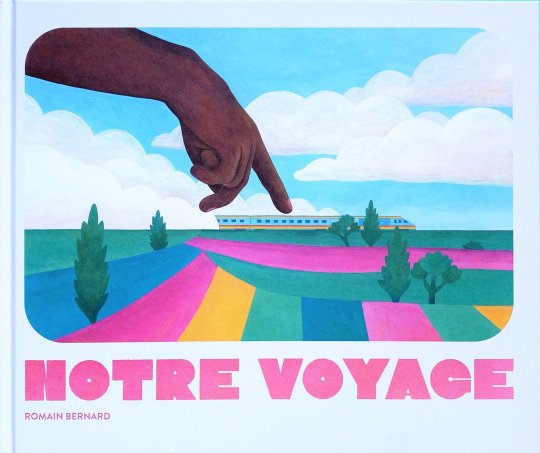
Simon sur les rails ? Oui, au sens propre ! Le lapin ayant terminé son travail à l’usine de marteaux, il se rend à la gare pour prendre le train de nuit qui le mènera chez son grand frère où il va passer le week-end. Mais le train est annulé. Alors Simon court, il court le long des rails qu’il quitte ensuite pour prendre un raccourci qui le fait escalader une montagne. Enfin, le village et la gare apparaissent. Simon arrivera-t-il à temps ? Car voilà que le train surgit.
En 2012, tout nous surprenait avec cet album : la thématique, le rythme, les cadrages, les couleurs en aplats, le choix des paysages dans lesquels ce lapin blanc semblait tout petit, mais bien courageux. Ce n’était que le début, Adrien Albert n’a cessé depuis de nous surprendre.

Et d’ailleurs, il nous mène en train dans un autre album, paru plus tard : Train fantôme. Et mieux encore, il continuera à nous embarquer puisqu’en janvier 2024 devrait paraître : ChocoTrain. Affaire à suivre…

De mémoire, car je ne le possède pas, que vous dire de cet album paru en 2012, sinon qu’il m’avait marquée ? Alors voici ce que dit La Joie de lire de Ligne 135 :
« Dans ce livre, inspiré d’un voyage au Japon, le lecteur suit le parcours d’une ligne de monorail du coeur d’une mégapole jusqu’à la campagne. À l’intérieur du train, une petite fille que sa maman vient de quitter sur le quai et qui va rendre visite à sa grand-mère. Les paysages se succèdent, et les pensées de la fillette défilent à leur rythme : quartier des affaires, quartier populaire, banlieue industrielle, no man’s land, forêt…
Un livre sur le temps, son appréhension, mais aussi une critique en douceur et par petites touches de notre monde moderne, un monde qui va vite, trop vite peut-être, engendrant inégalités et pollution… Entre paysages réels et allégoriques, dessinés au rotring par Albertine, en noir et blanc, avec juste une touche de couleur pour le monorail, ce livre est une sorte de mélodie philosophique. »
Et Brigitte Andrieux dans La Revue des Livres pour Enfants :
« Pourquoi vouloir faire le tour du monde quand il est déjà si difficile de faire le tour de soi-même ? La petite fille ne comprend pas toujours très bien ce que lui disent sa mère et sa grand-mère mais elle est bien décidée à leur prouver, une fois grande, qu'il est possible de réaliser ses rêves. Un minutieux dessin au trait en noir et blanc d'où ressort le beau train (un monorail) en couleurs nous emmène avec ravissement sur ce chemin des possibles, de la ville à la campagne. Une ode au voyage et à la vie. Un texte juste et concis, à la première personne, un format à l'italienne parfaitement adapté au propos, beaucoup de détails à voir dans l'illustration et une formidable invitation à prendre le temps de savourer l'instant présent et à mordre la vie à pleines dents… ça fait du bien ! »

Autant on peut hésiter à faire une croisière sur un paquebot géant, autant on prendrait un billet pour voyager dans le train d’Hubert Poirot-Bourdain! Ils ont en de la chance ces deux enfants d’y embarquer. Curieux, ils vont parcourir la rame et s’arrêter dans chaque wagon. Imaginez qu’on y trouve un aquarium, une galerie d’art avec, accrochés aux cimaises, des portraits de personnalités (y figurent, entre autres, Babar, Gaston, un maximonstre de Toni Ungerer et le Bon Gros Géant de Quentin Blake), une piscine, un jardin botanique, une bibliothèque, un cinéma, une cuisine, des couchettes et j’en passe. Arrivés en bout du train, nos deux espiègles s’asseyent sagement. Mais serions-nous à destination car voici la gare ? Heureusement, il faudra bien rentrer et reprendre le train.
L’utilisation du leporello se prête particulièrement bien à cette histoire. En carton et sans texte, il offre, une fois déplié, une vue en coupe sur l’intérieur du train du dernier wagon à la locomotive. Empreint d’humour et à l’aspect un peu enfantin, on apprécie l’utilisation d’un trait noir jeté et rapide et de belles couleurs en aplats.

On citera encore :
Un Train passe, de Donald Crews. Paru pour la première fois en 1981, ce cartonné sans texte aux couleurs arc-en-ciel est un classique toujours édité.
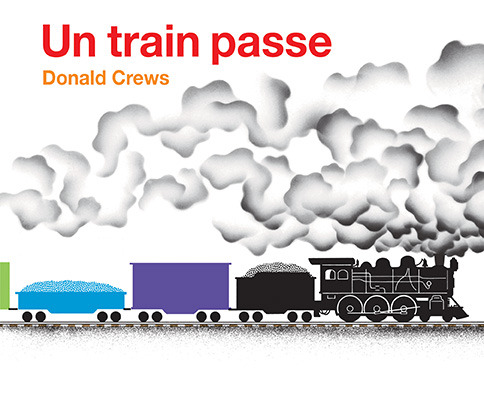
Le Train des souris où, pour décider ses sept petits à aller à l'école, Maman Souris a une idée formidable: elle invente une voie ferrée qui passe sous un tunnel. Tous les matins, elle se met sur les rails et fait la locomotive. Ses sept enfants et tous les amis s'accrochent à elle, comme des wagons. Là encore un classique, ce d’autant plus qu’on trouve la Famille Souris dans dix albums.

Boréal-Express. Il y a longtemps, une nuit, la nuit de Noël, un train s'arrête dans la rue devant la fenêtre d'un petit garçon. Invité à y monter, celui-ci y retrouve quantité d'autres enfants vêtus de pyjamas ou de chemises de nuit. Commence alors un voyage fantastique à travers bois, sur des montagnes enneigées, jusqu'au Pôle Nord, le pays du… Père Noël ! Rêve ou réalité?

Enfin, rendons hommage aux A.T.I. (Les Ateliers du Texte et de l’Image), à Liège, qui abritent le fonds Michel Defourny, et à Brigitte Van den Bosche, sa responsable. Ils ont monté, en 2022, la belle exposition Trains en jeux.
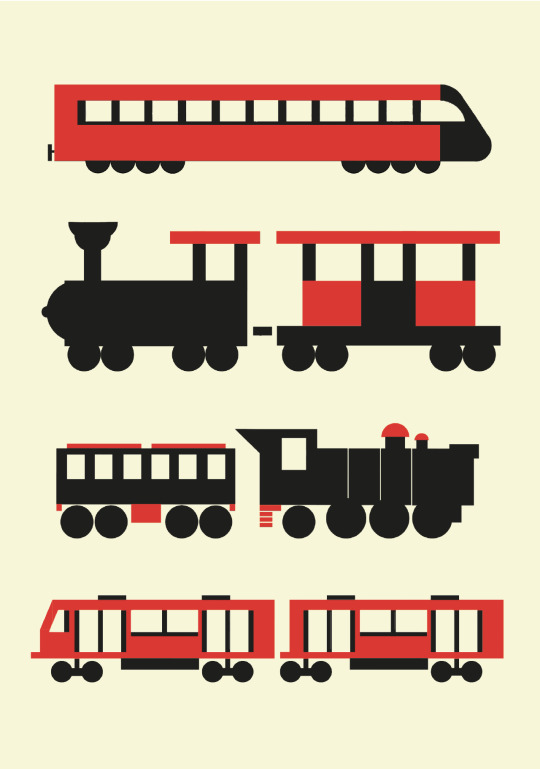
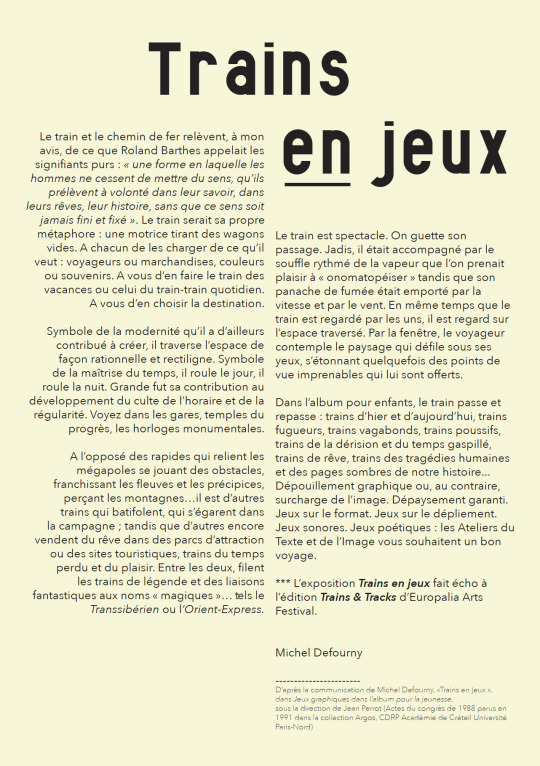


Ce dernier article, écrit également par Michel Defourny, est paru dans le numéro 26 (janvier-février 2022) de la revue Lectures Cultures
Bibliographie:
Quel train incroyable!, Tomoko Ohmura, L’Ecole des loisirs, 2023 - Dès 3 ans
Règlobus, Pierre Alexis, La Partie, 2022 - Dès 3-4 ans
Aller bon train, Pauline Delabroy-Allard, ill. Cati Baur, Thierry Magnier, 2023 - Dès 5 ans
Notre Voyage, Romain Bernard, La Partie, 2023 - Dès 4 ans
Simon sur les rails, Adrien Albert, L’Ecole des loisirs, 2012 - Dès 3 ans
Train Fantôme, Adrien Albert, L’Ecole des loisirs, 2015 - Dès 3 ans
Ligne 135, Germano Zullo, ill. Albertine Zullo, La Joie de lire, 2012 - Dès 6 ans
Le Train, Hubert Poirot-Bourdain, La Joie de lire, 2022 - Dès 3 ans
Un train passe, Donald Crews, L’Ecole des loisirs, 0-3 ans
Le Train des Souris, Haruo Yamashita, ill. Kazuo Iwamura, L’Ecole des loisirs, 1986 - Dès 3 ans
Boréal-Express, Chris Van Allsburg, L’Ecole des loisirs, 1986 - Dès 8 ans
Et Sophie van der Linden de rappeler les trains d'Anne Brouillard, du premier Voyage (1994), chez Grandir, au Voyage d'hiver (2013), chez Esperluette.

#L'Ecole des loisirs#Editions La Partie#Thierry Magnier#La Joie de lire#Albertine#Albertine Zullo#Germano Zullo#train#voyage#Adrien Albert
0 notes
Text

#47
#păsările#gli uccelli#germano zullo#albertine#signatura#children's literature#illustrations#cover art#bookstore#books read in 2023
0 notes
Text
La mia vita da Zucchina
La mia vita da Zucchina
Benvenuti o bentornati sul nostro blog. Nello scorso articolo ci siamo concentrati ancora una volta sulla Disney e il suo Periodo di Bronzo, arrivando in questo modo al loro 22° classico animato ossia Le avventure di Winnie the Pooh. Sono cresciuto guardando questo film, da piccolo l’avrò visto svariate volte e temevo, ora che sono cresciuto, che fosse invecchiato male. Invece mi sono dovuto…

View On WordPress
#adozione#Animation#animazione#bambini#Blue Spirit Studio#Céline Sciamma#Claude Barras#Claymation#drammatico#film#film d&039;animazione#film d&039;animazione francese#France 3 Cinéma#Francia#Gaspard Schlatter#Gebeka Films#Germano Zullo#Jiří Trnka#La mia vita da Zucchina#Ma vie de courgette#Michel Vuillermoz#Morgan Navarro#orfani#Paulin Jaccoud#Recensione#Recensione film#Rita Productions#Sixtine Murat#Sophie Hunger#stop-motion
1 note
·
View note
Photo

Perché ogni dettaglio non è fatto per essere notato.
Ma per essere scoperto.
Germano Zullo
6 notes
·
View notes
Text
[vc_row][vc_column][vc_column_text]Un giorno, un uomo parte con il suo camion rosso. È un signore come tanti, su un camion come tanti, in un posto come tanti, in un giorno che potrebbe sembrare come tanti, se non fosse che in fondo al suo camion trova qualcosa di inaspettato. È una cosa piccola, come lo sono tante altre cose. Una cosa da nulla. Un dettaglio. Lo si potrebbe anche non vedere, volendo. Ma l’uomo lo vede e la sua attenzione si trasforma in qualcosa di eccezionale, capace, all’improvviso, di cambiare la realtà, il mondo. Una storia meravigliosa sulla forza dell’empatia che ci unisce agli altri, sulla profonda intelligenza del bene, sull’importanza della responsabilità personale, sul significato più autentico dell’amore e della felicità.[/vc_column_text][thb_gap height="20"][/vc_column][/vc_row][vc_row][vc_column width="1/3"][thb_image full_width="true" alignment="center" image="2276"][/vc_column][vc_column width="2/3"][vc_column_text]Casa editrice: Topipittori
Autore: Germano Zullo
Illustratore: Albertine
Età: 3+
Numero pagine: 72
Formato: 21 x 21 cm
Prezzo: 15,00 Euro
Codice: 9878889210543
Data di pubblicazione: 15 aprile 2017[/vc_column_text][/vc_column][/vc_row]
0 notes
Photo

【素敵な洋書絵本の紹介】 ある男が崖の端までトラックを運転します。これ以上先に進めないところまで進んでトラックを止めます。 彼はトラックの後ろのドアをあけました。鳥の群れ飛び出しまた。 けれども、小さな鳥だけが飛び立つことができません。 男は飛び立てない小さな小鳥とひと時をすこしながら、旅立ちを待つのでした。 スイス在住の詩人とイラストレーターの絵本です。 Little Bird Contributor(s): Zullo, Germano (Author) , Albertine (Illustrator) EAN: 9781592701186 Publisher: Enchanted Lion Books Binding: Hardcover Copyright Date: 2012 Pub Date: March 20, 2012 Target Age Group: 05 and UP Physical Info: 1.27 cms H x 21.08 cms L x 21.34 cms W (0.5 kgs) 72 pages Annotation: Winner of the 2011 Prix Sorcieres, Little Bird is a quietly explosive meditation on generosity and freedom #germanozullo #albertine #readleafbooks #art #本 #本棚 #絵本 #児童書 #絵本屋 #洋書絵本 #絵本が好き #絵本が好きな人と繋がりたい #絵本のある暮らし #芸術 #英語 #イラスト #base #baseec @readleafbooks Webショップで紹介中。プロフィールからぜひどうぞ! https://www.instagram.com/p/Cj-YWhnv3dO/?igshid=NGJjMDIxMWI=
#germanozullo#albertine#readleafbooks#art#本#本棚#絵本#児童書#絵本屋#洋書絵本#絵本が好き#絵本が好きな人と繋がりたい#絵本のある暮らし#芸術#英語#イラスト#base#baseec
0 notes
Photo
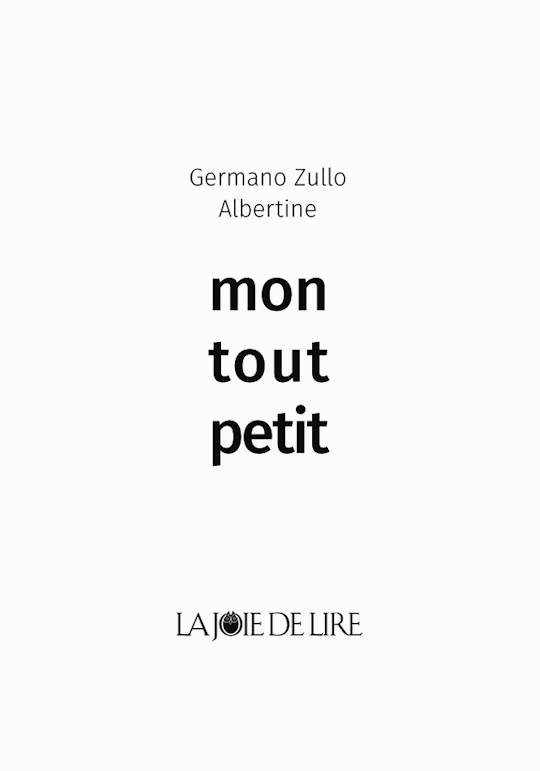
1 note
·
View note
Photo

My Life as a Zucchini (2016, Switzerland)
For the last few years, The Hollywood Reporter has published several “Brutally Honest Oscar Ballots”. These anonymous commentaries have exemplified the thought process behind select members of the Academy of Motion Picture Arts and Sciences’ (AMPAS) various branches, of which there are more than 6,000 voting members. Commentary on animated features have been most revealing. From this year’s brutally honest ballots, here are the words of a member of the executive branch:
I saw Kubo [and the Two Strings] and don't really remember it. I loved the music in Moana. I think The Red Turtle is very strong. I loved everything about My Life As a Zucchini — I was very taken with the idea of making a movie about a zucchini. But I voted for Zootopia because it has something important to say about the world. Basically, we all have to be nicer to each other.
Also known as My Life as a Courgette or by its original French-language title, Ma vie de Courgette, here is some brutal honesty: Claude Barras’ My Life as a Zucchini has nothing to do about a zucchini. A zucchini never appears in the film. "Zucchini”/”Courgette” is in the title because the main character – Icare – prefers to be called Courgette because it is important to him (a source of constancy, as his late, abusive mother called him that). For the remainder of this write-up, I will refer to Icare as Courgette. The film is based on Gilles Paris’ novel Autobiographie d'une Courgette – where Courgette is sent to an out-of-the-way orphanage where he learns, loves, and grows. My Life as a Zucchini is one of the tenderest animated films of this new century, showing the beauty of a young boy’s renewal as he sets out to live his life the way he has wanted to.
In the opening scenes, we see Courgette by himself in his room when his drunken mother rampages up the stairs, threatening to beat him. We sense this is a routine that has played out before. Courgette quickly slams the trapdoor leading up into his room on his mother’s head, accidentally killing her. After this macabre introduction, Courgette is taken to an orphanage by police officer Raymond, and meets the other children there. Initially hesitant to talk to the others and bullied by Simon for his peculiar nickname, Courgette eventually settles into his new home when he and Simon exchange stories about why they have come to the orphanage. Simon’s parents are drug addicts, Courgette learns, and the others’ parents have lost custody of their children for reasons of insanity, deportation back to Africa, homicide, and sexual assault/pedophilia. This exchange of experiences, this realization that, “We have no one to love us,” binds the children together as they look out for one another. They will look out for the new girl, Camille, as well. And it is with Camille that Courgette will experience love for the first time and learns how to act upon such feelings.
So often labeled a “genre” for children, animation (which is not a genre; genres exist within the realm of animated film and not vice versa) is attached a stigma that is condescending, dismissive. Sometimes such classifications are warranted, especially given the increasing volume of American feature animation in a CGI-dominated era. It is becoming more difficult to find animated films that can emotionally enrich adults and children as a result, as this American animation arms race can be depicted as a race for the bottom as well as a race for the bottom line. In Europe, films like Song of the Sea (2014), Ernest & Celestine (2012, France/Belgium), and Long Way North (2015, France/Denmark) are filling in spaces that studios like Disney, Pixar, and Studio Ghibli cannot possibly cover alone. The story of contemporary animated film cannot be written from the United States and Japan alone, as Europe and Latin America are beginning to make forays into the industry.
Perhaps moreso than any of those aforementioned films, My Life as a Zucchini – in its alternating melancholy and precious joys – is acutely aware of how mature its child characters are and how much growing up they have yet to do. Barras’ film and Céline Sciamma’s (director/writer of 2014′s Girlhood) screenplay anticipates what these children might be, and exemplifies that their ability to love themselves and others remains, that their traumatic pasts need not cast long, inescapable shadows over the course of their lives that My Life as a Zucchini invokes. The path back from the depths of despair and desolation requires time, reflections, and the company of friends. If this sounds heavy, it is. But Sciamma has written her screenplay in a way that is accessible for older pre-teens as well as adults open to this kind of experience, as adults have enough experience to attest to the transformative nature of empathy and friendship when others are being malicious and manipulative. And perhaps most importantly, Barras and Sciamma allow My Life as a Zucchini to exhale. They understand silence can carry significant meaning. Silence is used here as an economic way to build character as well as allow the audience to collect their thoughts after a peculiar punchline, hijinks, or dramatic outburst.
Though My Life as a Zucchini is very much an animated drama, it is also charming and comical in some parts. A running gag about utterances and behaviors during heterosexual sex is thankfully bereft of sheer pervertedness – the children are of an age where they should be learning about this subject. A vacation including the staff and children of the orphanage to a wintry mountainside resort is irrepressible fun for everyone involved. For such an intimate film, it is remarkable how precise the writing is to allow for such contrasting tones within an all-too-brief sixty-six-minute runtime.
None of this should distract from the fact that Barras’ motion picture is beautifully animated in its stop-motion simplicity. It might not be as technically groundbreaking as the 3D printing employed in Kubo and the Two Strings (2016) and the style might require significant adjustment for those unaccustomed to the blobby character design, but the emotional range of their eyes and eyebrows are equal to the difficult task of empowering the story at hand – touching upon places within the viewer too rarely exercised when enjoying an animated film.
My Life as a Zucchini’s storytelling mastery also seems to have struck a chord with critics and audiences in Europe. The film was nominated for the Caméra d'Or at the Cannes Film Festival and it has won every single major animation award in the Francophone world (in addition to a Best Adapted Screenplay win at France’s César Awards – to have an animated film win a screenplay award is shocking in any context). It may not reach a large audience elsewhere in the world, but My Life as a Zucchini – which has just been released in North America in limited release – is nevertheless a film that cherishes our loved ones, even if those loved ones might not be a traditional family. Most importantly, it reminds us that Courgette and his friends are survivors and victors in life itself.
My rating: 8/10
^ Based on my personal imdb rating.
NOTE: This write-up is based on the French audio with English subtitles.
#My Life as a Zucchini#My Life as a Courgette#Ma vie de Courgette#Claude Barras#Celine Sciamma#Germano Zullo#Morgan Navarro#Sophie Hunger#My Movie Odyssey
2 notes
·
View notes
Text
Perchè ogni dettaglio
non è fatto per essere notato.
Ma per essere scoperto.
- Germano Zullo
41 notes
·
View notes
Text

Perchè ogni dettaglio
non è fatto per essere notato.
Ma per essere scoperto.
.🦋.
🔸Germano Zullo
8 notes
·
View notes
Photo
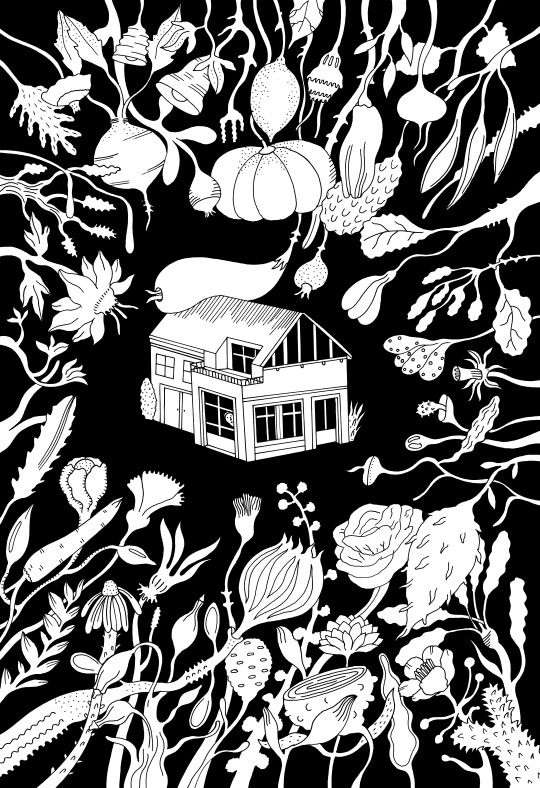
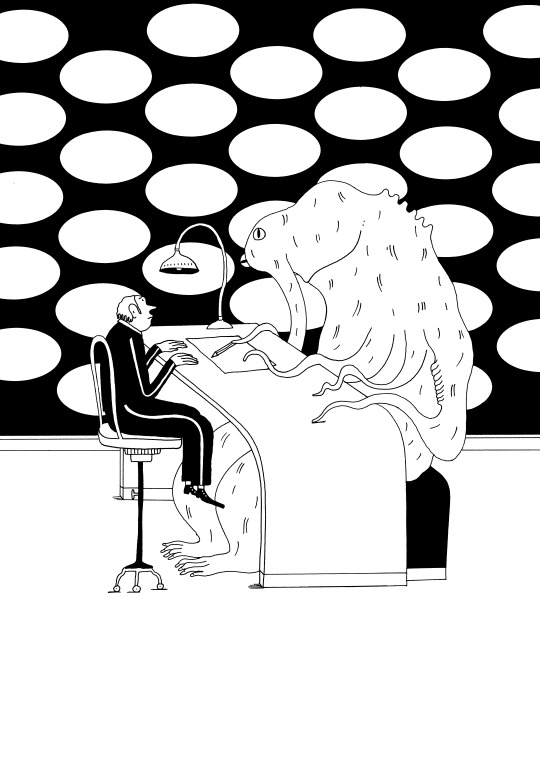
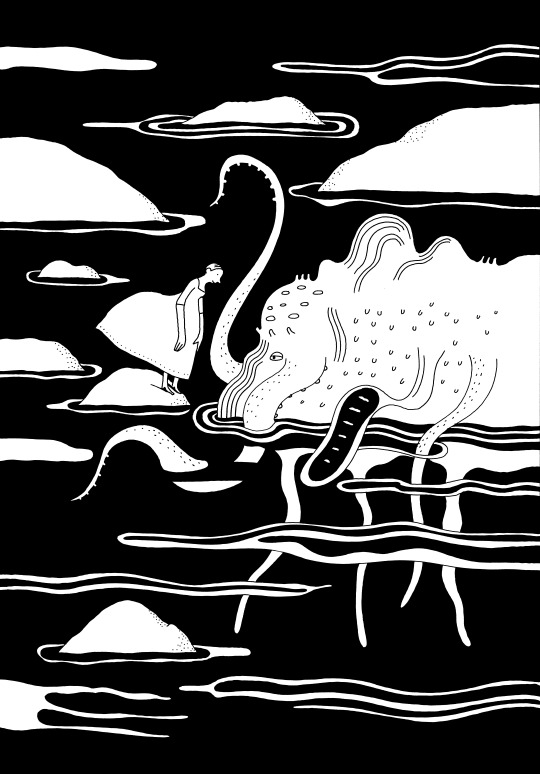
Extrait de notre livre “ Depuis que les monstres”. Tetxe de Germano Zullo
14 notes
·
View notes
Text
Pas l'temps je lis (septembre 2023)
Pas l’temps je lis est la chronique que je tiens dans le supplément culture du quotidien Le Temps. Ci-dessous vous retrouvez la liste des livres présentés dans les chroniques. Elle permet aux abonné.es du Temps de les retrouver facilement, offre des pistes aux lecteur.ices du blog et est utile aux éditeurs.trices qui voient ainsi quels livres ont été retenus et se font une idée du ton de la chronique.

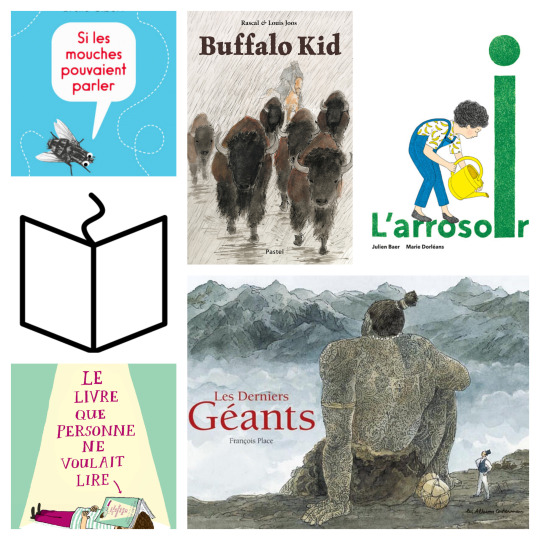
09 septembre 2023 - Chats
Milton chez le voisin, Haydé, la Joie de lire - Dès 3 ans
Comme dans un film, Rémi Courgeon, ill. Arnaud Nebbache, Seuil Jeunesse - Roman dès 8-9 ans
16 septembre 2023 - Les liens qui unissent
Ce qui nous lie, Anne Laval, Les Fourmis rouges - Dès 3-4 ans
Pour demain et bien plus loin, Germano Zullo, Albertine, la Joie de lire - Album tout public dès 6 ans
De 0 à dix, Christian Demily, Alice de Nussy, Grasset Jeunesse - Dès 2-3 ans
22 septembre 2023 - Traces
Buffalo Kid, Rascal, Louis Joos, L'Ecole des loisirs (Pastel) - Album dès 6 ans
Les derniers géants, François Place, Casterman - Album dès 8 ans
Nuit de chance, Sarah Cheveau, La Partie - Album dès 4 ans
30 septembre 2023 - Parole d'objets et autres bizarreries
Si les mouches pouvaient parler, Bruno Gibert, L'Ecole des loisirs (Neuf) - Dès 8-9 ans
Le Livre que personne ne voulait lire, Richard Ayoade, Tor Freeman, Hélium - Roman dès 8-9 ans
L'Arrosoir, Julien Baer, Marie Dorléans, Kaléidoscope - Album dès 6 ans
#Hayde#La Joie de lire#Rémi Courgeon#Albin Michel Jeunesse#Anne Laval#Les Fourmis rouges#Albertine#Albertine Zullo#Germano Zullo#Grasset Jeunesse#La Partie#Rascal#Louis Joos#Sarah Cheveau#L'Ecole des loisirs#Pastel#Bruno Gibert#Hélium#Kaléidoscope#Julien Baer#Marie Dorléans
0 notes
Photo

Sélection de #livrespouravoirpeur pour #halloween #livresadolescents #livresenfants sur @ernestlire #miniernest (lien dans la bio) 😱🎃 Les langoliers #surnaturel #evenementinimaginable de #stephenking @stephenkingfr @albinmicheljeunesse 😱🎃 Le musée des tortures #jeudepiste #magienoire #inquisition de @corenblitrachel @casterman_jeunesse 😱🎃 Bienvenue à Perfect City #fantastique #fantasy #nomansland #imagination #lunettes de @helddesign @fleuruseditions 😱🎃 Depuis que les monstres #recueildenouvellescauchemardesques #satiredenotresociete de Germano Zullo et @albertine.zullo @lajoiedelire https://www.instagram.com/p/CVm_Aumqh8I/?utm_medium=tumblr
#livrespouravoirpeur#halloween#livresadolescents#livresenfants#miniernest#surnaturel#evenementinimaginable#stephenking#jeudepiste#magienoire#inquisition#fantastique#fantasy#nomansland#imagination#lunettes#recueildenouvellescauchemardesques#satiredenotresociete
2 notes
·
View notes
Text
La Vida de Calabacín (2016)

¡Atención, esta crítica contiene spoilers!
Título original: Ma Vie de Courguette
Dirección: Claude Barras
Guion: Calude Barras, Céline Sciamma, Germano Zullo, Morgan Navarro, (Historia: Gilles Paris)
Fotografía: David Toutevoix
Música: Sophie Hunger
Montaje: Valentin Rotelli
Productora: Rita Productions, Blue Spirit Animation, Gébéka Films, KNM
Año: 2016
Elenco: Gaspard Schlatter, Sixtine Murat, Paulin Jaccoud, Michel Vuillermoz, Raul Ribera, Estelle Hennard, Elliot Sanchez, Lou Wick, Brigitte Rosset
País: Suiza, Francia
En algún momento hemos tenido la oportunidad de ayudar al desprotegido, estar para los que lo necesiten. Pero vivir las cosas desde el punto de vista del necesitado, es totalmente diferente. La Vida de Calabacín (2016) nos ayuda a empatizar con ellos.
La película trata sobre un niño apodado Calabacín, que luego de la muerte de su madre es trasladado a un orfanato. A partir de entonces deberá superar sus dificultades personales y aprender a adaptarse a su nueva vida junto con los otros niños huérfanos que también han atravesado una vida difícil.
Los personajes están magníficamente construidos y sus conflictos muy bien expuestos a lo largo de la película. El observar el proceso de adaptación de Calabacín es bastante refrescante, sobre todo por lo honesto. Lo acertado de cómo se maneja la manera en que piensan los niños, así como el humor en ello.
Esto es lo que le permite hablar de temas como sexualidad, abuso infantil, orfandad, sin incomodar a la gente y sin ofender a quienes lamentablemente han pasado por situaciones similares. Otra cosa que también es de admirar es que los encargados del orfanato no son los villanos de la película. A fin de cuentas, son funcionarios que quieren ayudar de la mejor manera posible con los recursos que disponen. Los antagonistas son los demonios personales de los niños.
Debido al poco tiempo con que cuenta la película, es vital aprovechar cualquier recurso que se tenga para dar información a la audiencia, sin saturar. Algo que se logra muy bien mediante la narración lineal con elipsis hiladas por medio de la correspondencia de Calabacín.
La decisión de usar stop motion para esta historia fue muy acertada. Junto con la paleta de colores llamativos, son una buena manera de recordarnos que los protagonistas son niños. Aunque, siempre con un toque negro u oscuro para recordarnos la cruenta realidad que viven los personajes. Algo reforzado a través del constante montaje de los dibujos infantiles.
Otro punto a favor fue el uso de la luz dura para definir los estados de ánimo de los personajes. Cuando nos presentan a Camile, ella se esconde en un oscuro armario (una chica con un esqueleto oculto) junto a un cómplice también con un par de huesos en los bolsillos. El resto de las acciones y trivialidades diarias siempre son brillantes, casi en un mediodía permanente.
Una película para la que no hay límite de edad, sin riesgo a traumatizar o idiotizar a los más pequeños. Con un mensaje lleno de optimismo y esperanza. Un retrato hecho con palabras sinceras que nos hace reflexionar sobre el lado duro de la vida.
Póster: lahiguera.net
Ficha Técnica: Imdb
#Crítica de cine#cine#películas#animación#stop motion#la vida de calabacín#my life as a zucchini#Claude Barras
5 notes
·
View notes
Text
Picture Books & Graphic Novels
• Sky High, Germano Zullo and Albertine
• Migrant, José Mateo and Javier Martínez Pedro
• SuperMutant Magic Academy, Jillian Tamaki
Art Books
• Wayang & its doubles: Javanese puppet theatre, television and the Internet, Jan Mrázek
• Black out: silhouettes then and now, Asma Naeem
• In Praise of Shadows, Junʼichirō Tanizaki
0 notes